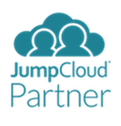Before automating any process, it’s important to make sure you understand all the moving parts in the current work stream and document it, as is. From there, you can look at who’s involved, why, and at what point they step in. You can also evaluate how the steps flow, what level of communication there is throughout, and how long the process takes end-to-end.
Once you have all of this, you can talk to the people involved and get advice from an IT consulting service to decide whether improvements are possible that allow for a more simplified, streamlined automated solution.
Here are our top tips on making that automated solution a reality.
- Ditch paper, go mobile
For some companies, onboarding is just a fancy name for form-filling at the spare desk in HR. By going paper-less and creating online or mobile-friendly forms, you can share them with new hires ahead of their start date and make forms quicker and easier to compete, with autofill features and dropdowns.
- Review the process and re-evaluate anything you can’t automate
Not everything can be automated. Some, more operational tasks like getting a badge or key card for entry to the building will have to be managed outside the realms of digital.
By ringfencing these jobs, you can also assign responsibility to the appropriate team or person, such as the office manager, making them more likely to happen and easier for the employee to follow up on.
It’s not about eliminating anything IT staff can’t manage, but ensuring the full end-to-end process is documented. At the very least this list can be waiting in the employee’s inbox when they start, so they understand what needs to be completed manually and who to talk to, to get the ball rolling.
- Script the process
Your IT Team or IT service provider will be able to help you script much of the process. Whether the new start is an intern or the new managing director, many of their needs will be the same, so you can box off lots of tasks, such as:
- Providing a computer or laptop
- Providing phone/tablet/other required devices for remote working
- Installing applications
- Creating an email mailbox and active directory users
- Adding user accounts to groups
- Assigning access to folders, either in-house or on the cloud
- Creating a home/personal folder
An IT support that looks after machine management and ensures parity across the business is incredibly useful at this stage, allowing you to roll out complete new systems on demand.
- Record video introductions
It might sound a bit out there, but short and sweet introductions from everyone a new start needs to know can be captured in minutes on a smartphone and the employee will have it for as long as they need to refer to it.
It’s a novel and useful take on the ‘desk tour’, asking everyone to share names that the new start will instantly forget, because there are just too many to remember.
A video will allow the businesses to inject some brand personality into onboarding and existing employees can be as creative as they like with the information they share, from their name and roll to their favourite work snack or football team. It’s about making someone feel welcome and showing them what makes their new team tick.
- Make training digital
Everyone learns at different rates and not everyone is comfortable with classroom-style training sessions. If you’re only training a few people every few months, you should probably evaluate whether one-on-one sessions are the best use of time and effort anyway.
Training software can be customised, allowing employees to move through the information at their own pace, taking notes and revisiting the sections they need most support on.
A digital process can also work particularly well if you’re in an industry with compliance obligations and required to document staff training.
- Collect metrics
Digital forms are easier and more efficient for filing, but the information they collect can be used in lots of other ways, to create dashboards and record analytics on your workforce.
Even if you’re small in number, the metrics will give you a quick sense of your workplace demographics, skill set and structure. That’s useful data to have at your fingertips, particularly if you have plans to grow, or restructure down the line.
You’ll have a rock-solid source of information to help you identify resource needs or map change to help move the business forward with a solid IT roadmap.
- Add check ins
A good process is one that’s revisited and updated regularly to make sure it’s still working well, so we recommend building check-ins to:
- The process itself (from a functional perspective) with regular IT healthchecks and
- The onboarding programme (from a people perspective)
Onboarding isn’t something that happens overnight. Employees need time to find their feet in a new business and by assigning mentors or adding automated check-ins to work colleague’s diaries, you can remind those who work closest, to take a moment every now and then and ask the new team member how they’re getting on.
We’ve talked about how each of these steps can help businesses save time and money and improve their processes, but they’re about more than being functionally fit.
They demonstrate how better IT integration into everyday business tasks can not only help automate tasks ripe for change, but transform the way we welcome and socialise a business’s most important asset: Their people.
Learn how you can integrate the best in IT support into your business to help it meet your needs and build a path towards growth by downloading our eBook on The Role Of IT In Your Growing Agency:
- SHARE
- Tweet
-











